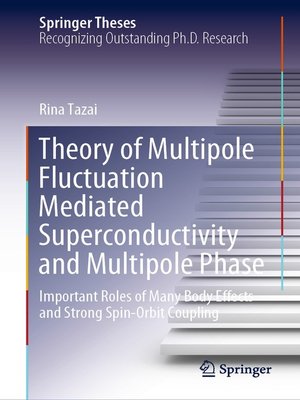Theory of Multipole Fluctuation Mediated Superconductivity and Multipole Phase
ebook ∣ Important Roles of Many Body Effects and Strong Spin-Orbit Coupling · Springer Theses
By Rina Tazai

Sign up to save your library
With an OverDrive account, you can save your favorite libraries for at-a-glance information about availability. Find out more about OverDrive accounts.
Find this title in Libby, the library reading app by OverDrive.



Search for a digital library with this title
Title found at these libraries:
| Library Name | Distance |
|---|---|
| Loading... |
A strong spin-orbit interaction and Coulomb repulsion featuring strongly correlated d- and f-electron systems lead to various exotic phase transition including unconventional superconductivity and magnetic multipole order. However, their microscopic origins are long standing problem since they could not be explained based on conventional Migdal-Eliashberg theorem.
The book focuses on many-body correlation effects beyond conventional theory for the d- and f-electron systems, and theoretically demonstrates the correlations to play significant roles in "mode-coupling" among multiple quantum fluctuations, which is called U-VC here. The following key findings are described in-depth: (i) spin triplet superconductivity caused by U-VC, (ii) being more important U-VC in f-electron systems due to magnetic multipole degrees of freedom induced by a spin-orbit interaction, and (iii) s-wave superconductivity stabilized cooperatively by antiferromagnetic fluctuations and electron-phonon interaction contrary to conventional understanding. The book provides meaningful step for revealing essential roles of many-body effects behind long standing problems in strongly correlated materials.







